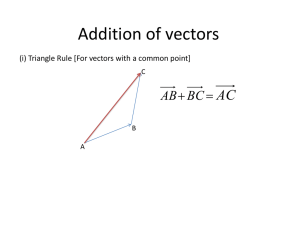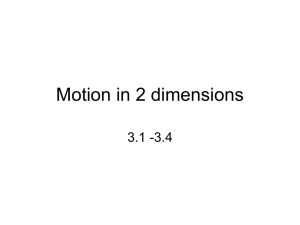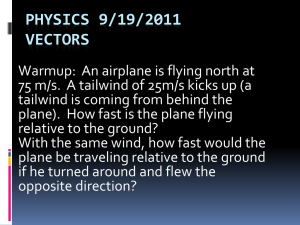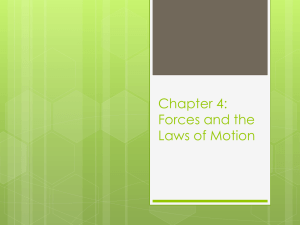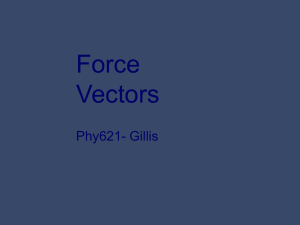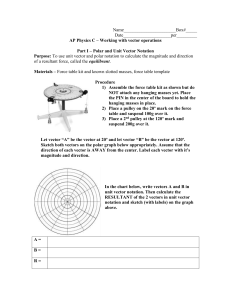Vector Addition & Subtraction: Geometric & Analytical Methods
advertisement
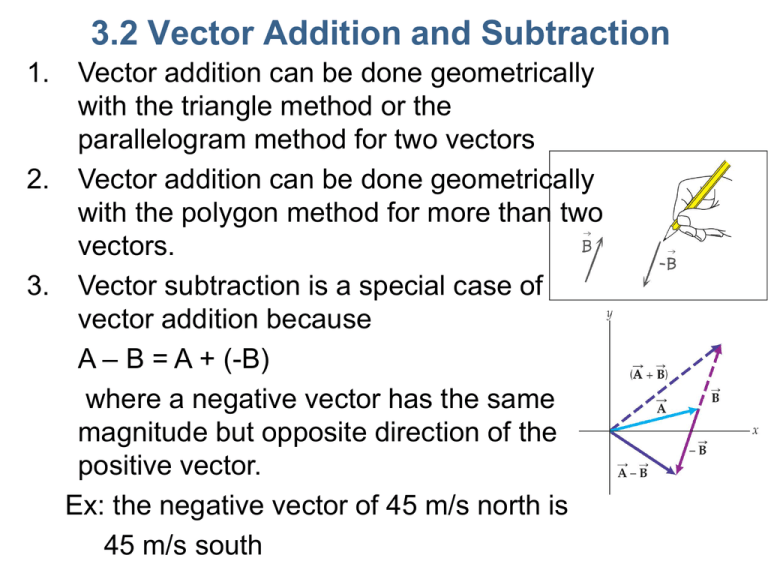
3.2 Vector Addition and Subtraction 1. Vector addition can be done geometrically with the triangle method or the parallelogram method for two vectors 2. Vector addition can be done geometrically with the polygon method for more than two vectors. 3. Vector subtraction is a special case of vector addition because A – B = A + (-B) where a negative vector has the same magnitude but opposite direction of the positive vector. Ex: the negative vector of 45 m/s north is 45 m/s south Geometric methods of vector addition Triangle method: Geometric Methods of Vector Addition Parallelogram Method: The parallelogram method can be used to sum two vectors by placing both of their tails together and sketching the two remaining sides that would create a parallelogram. The diagonal with the common tail represents the resultant vector, whose direction is away from the initial vector’s common origin. Example 3 Two displacement vectors A = 5m and B = 3m are given. Show: a) A + B with the triangle method b) A + B with the parallelogram method c) A – B with the triangle method d) A – B with the parallelogram method Vector addition is conveniently done by the analytical component method (See p. 78 in text) 1. Resolve the vectors to be added into their xand y- components. Include directional signs (positive or negative) in the components. 2. Add, algebraically, all the x-components together and all the y-components together to get the x- and y- components of the resultant vector, respectively. 3. Express the resultant vector using a) The component form, C = Cxx + Cyy or b) The magnitude-angle form, C = sqrt(Cx2 + Cy2), q = tan-1(Cy/Cx) Vectors can be resolved into components and the components added separately; then recombine to find the resultant. Use the analytical component method to find the resultant velocity of the following two velocities. V1 = 35 m/s 30o north of east V2 = 55 m/s 45o north of west • Resolve the vectors to be added into their x- and y- components • Add x-components together and y-components together • Express the resultant vector in component form: • In magnitude-angle form: Concept Test – slides 2-13 • D:\Chapter_03\Assess\Assess_Present\W BL6_ConcepTests_Ch03.ppt • Homework Problems: p. 96-98; 25, 27, 28, 31, 33, 43, 44, 48, 49, 53
